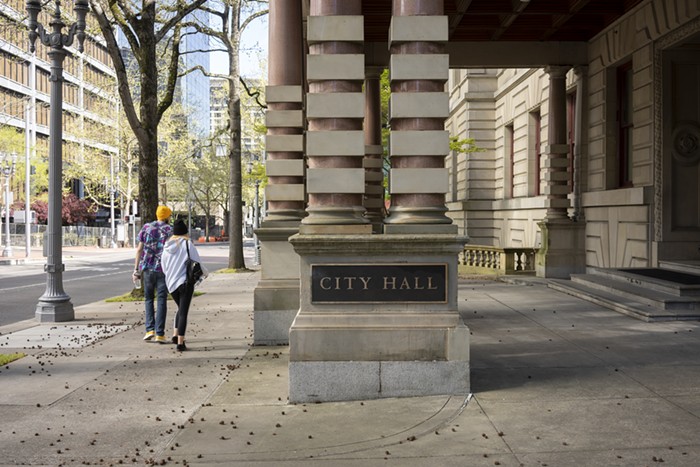IT'S AN EMBARRASSMENT of riches for a state that recently went three decades without a vote on marijuana: This November, it's entirely possible you'll have the chance to vote on not one, not two, but three initiatives that would legalize pot.
It sounds great, right? Three chances to do away with expensive, racist, and unproductive marijuana laws. If poll numbers are to be believed, 2014 is looking like the year Oregon starts reaping financial rewards from pot, instead of just dumping millions into outdated prohibition.
But the conversation around legal weed has been a muddle in this state for years, and if Oregon joins Washington and Colorado in the sunny land of enlightenment this time around, it's bound to be a confusing trip.
So let's figure out where we stand.
Right now, two groups—ostensibly in support of one another, but eyeing each other askance—are hauling in big donations and doing their damnedest to corral enough signatures to land their own legalization proposals on the ballot by the July 3 deadline.
The first is being pushed by the Campaign for the Restoration and Regulation of Hemp (CRRH), piloted by Paul Stanford, a longtime activist who managed to put legalization to a vote back in 2012. That year, Stanford's Measure 80 was panned as too lenient, and failed to generate much national financial backing. Even so, it barely lost, attracting 47 percent of the vote.
This time around, Stanford's pushing two pot initiatives, which he's guaranteed will make the ballot. One—a statutory change—is sort of a retread of the 2012 measure, but with some tweaks that give the governor additional oversight of how pot is regulated. In broad strokes it would legalize marijuana use by anyone over 21, and create a new seven-member commission to oversee sales and taxation. You could grow up to 24 plants without government oversight under the proposal.
Stanford's second initiative is simpler: It would amend the Oregon Constitution to allow for marijuana use, a change the activist says is more bulletproof than a mere change to state law.
CRRH, this year, has captured some of the big money Stanford couldn't find in 2012. A Texas organization called the Foundation for Constitutional Protection has put tens of thousands of dollars into the effort. And Stanford says the group has pledged $300,000 more—money that will give a boost to his signature-gathering campaign. Plus, he claims 6,000 Oregonians have made smaller donations to the cause.
"We've been bringing in new donors right and left," he says.
The final initiative, being put forth by a group called New Approach Oregon, is similar to the successful legalization efforts in Colorado and Washington, and has attracted some of the corresponding big money. It would give the OLCC power to regulate marijuana sales, but also allow people over 21 to cultivate their own small stash.
The campaign, run by local activist Anthony Johnson, suffered some setbacks in recent months, when a Canby attorney tangled its first proposal up in the Oregon Supreme Court. Johnson responded by filing a second initiative, which has since been cleared to collect signatures.
Beyond a sizeable war chest, New Approach is collecting some of Portland's most-recognizable political figures to join the fight. Former county chair Jeff Cogen now works for the organization, leading the signature gathering push. And veteran campaign consultant Liz Kaufman—who recently helped get Charlie Hales elected mayor—is serving as the group's spokesperson these days.
"I'm not sure all the measures will qualify," Kaufman says. "We feel confident ours will."
But the bottom line is this: Both campaigns have a good shot at making the November ballot. Stanford's done it before with fewer resources, and he has a months-long head start in signature collections. New Approach has money and power players.
So if all three initiatives go up for a vote in November, and Oregonians approve all three, what then?
Stanford's constitutional amendment would stand on its own, unchanged. But the other two initiatives, both changes to state law, would be battling for the most votes.
The measure that wins this popularity contest will be given precedence, under state law.













